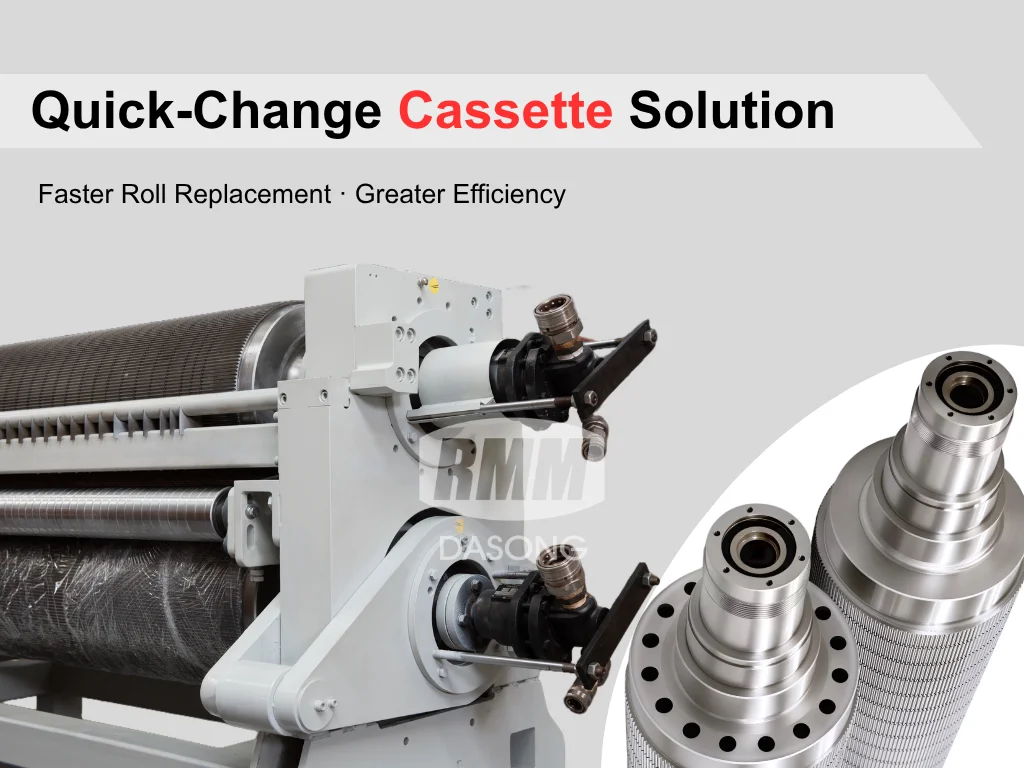In the corrugated board manufacturing industry, corrugating rolls play a decisive role in determining product quality, production stability, and machine efficiency.
Proper maintenance not only prevents unnecessary downtime but also significantly extends roll lifespan and ensures consistent flute precision.
At RMM, we believe that quality begins with maintenance. Here are five key practices to help you keep your corrugating rolls performing at their best.
1. Maintain Roll Balance
Maintaining proper balance is essential for smooth machine operation.
If eccentricity occurs between the corrugating rolls in a single facer machine, it may lead to vibration, uneven wear, or misaligned flute profiles.
Regular inspection of roll alignment and bearing conditions helps avoid premature damage and keeps corrugating performance stable.
2. Optimize Pneumatic / Hydraulic Pressure
The pressure between upper and lower corrugating rolls is controlled pneumatically or hydraulically.
To achieve the best cardboard quality and reduce mechanical stress, the pressure should always be adjusted as low as possible — based on paper width and weight.
Lower pressure not only extends the lifetime of corrugating rolls but also minimizes machine wear.
If unusually high pressure is required to form the cardboard, it often indicates an underlying mechanical issue that must be inspected immediately.
3. Control Roll Temperature
Temperature directly affects flute formation and adhesive performance.
Insufficient heating or drainage may cause low roll temperature, resulting in poor bonding and uneven flute shapes — especially when the machine runs at lower speeds.
Operators should monitor and control temperature regularly to ensure stable paper forming quality and avoid excessive wear caused by unnecessary pressure increases.
4. Keep Rolls Clean
Glue residue, dust, and paper scraps often accumulate on corrugating rolls, increasing friction and negatively impacting suction performance.
If not cleaned properly, these contaminants lead to uneven board formation and reduce production efficiency.
Routine cleaning in the correct way prevents buildup, enhances product quality, and extends both machine and roll lifetime.
5. Prevent Abnormal Rubbing
Ideally, none of the five main rolls should directly contact each other.
However, in real production, abnormal rubbing often occurs — particularly between the lower corrugating roll and glue roll, pressure roll, or suction guard.
Such friction can severely reduce the service life of the rolls and increase regrinding frequency.
By following these five maintenance principles — balance, low pressure, temperature control, cleanliness, and clearance inspection — manufacturers can significantly enhance roll performance, reduce wear, and extend operational lifespan.
At RMM, we not only manufacture precision corrugating rolls but also share our technical expertise to help our customers achieve consistent, high-quality production every day.



